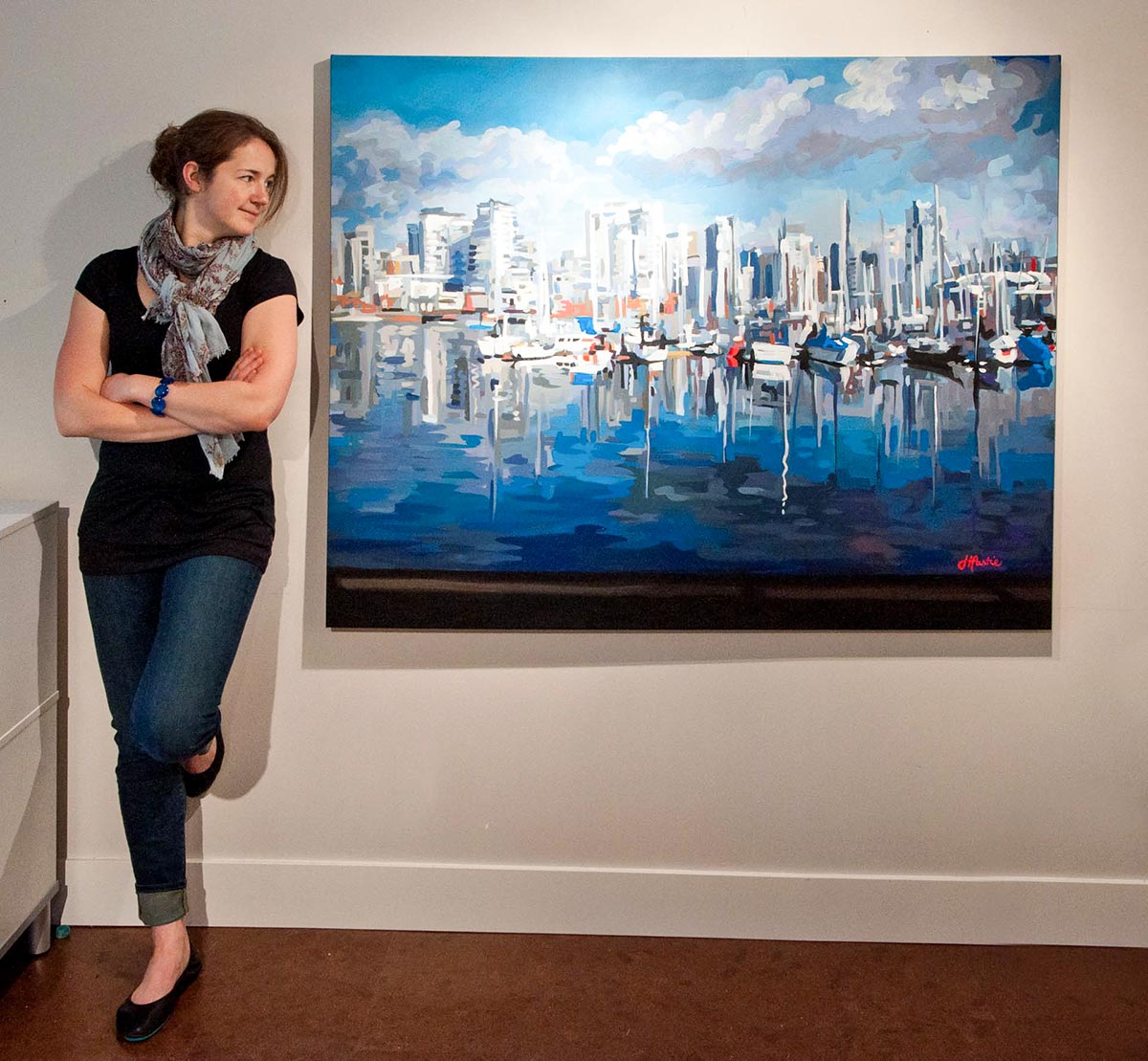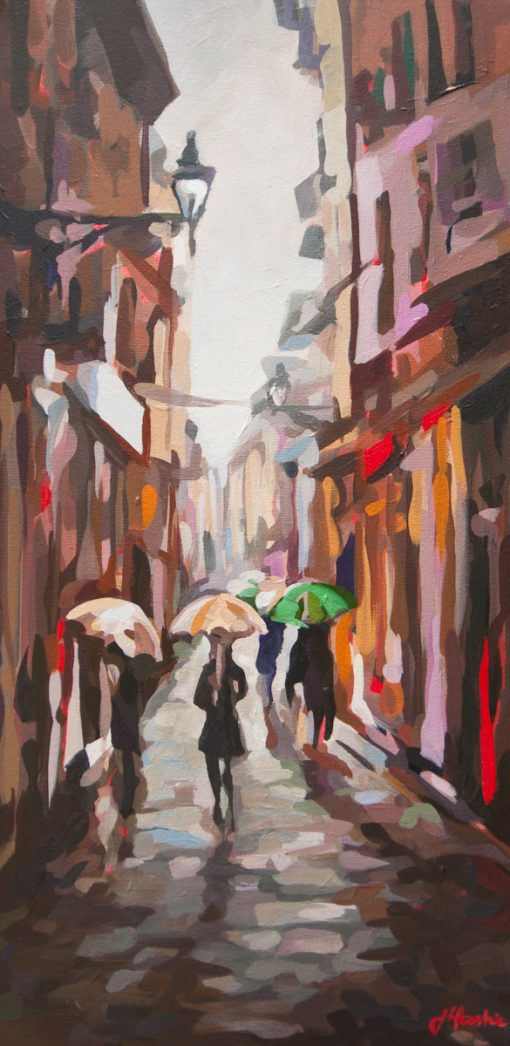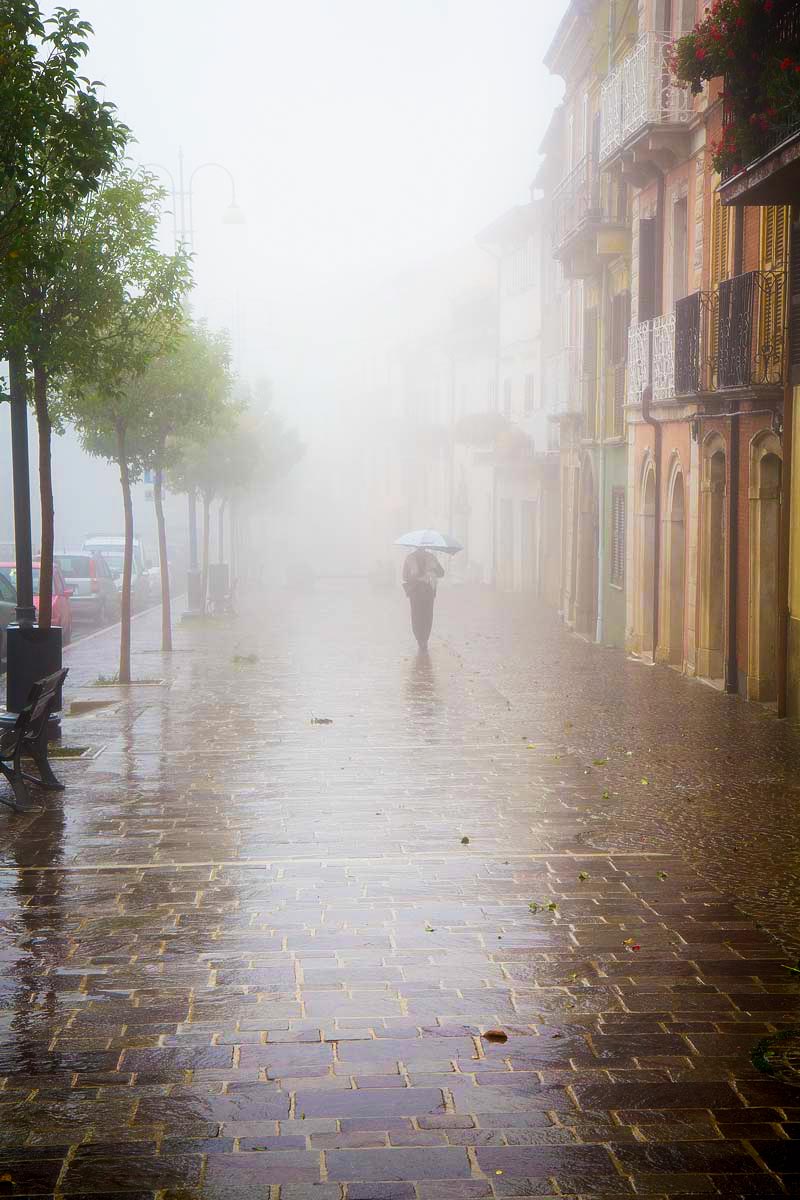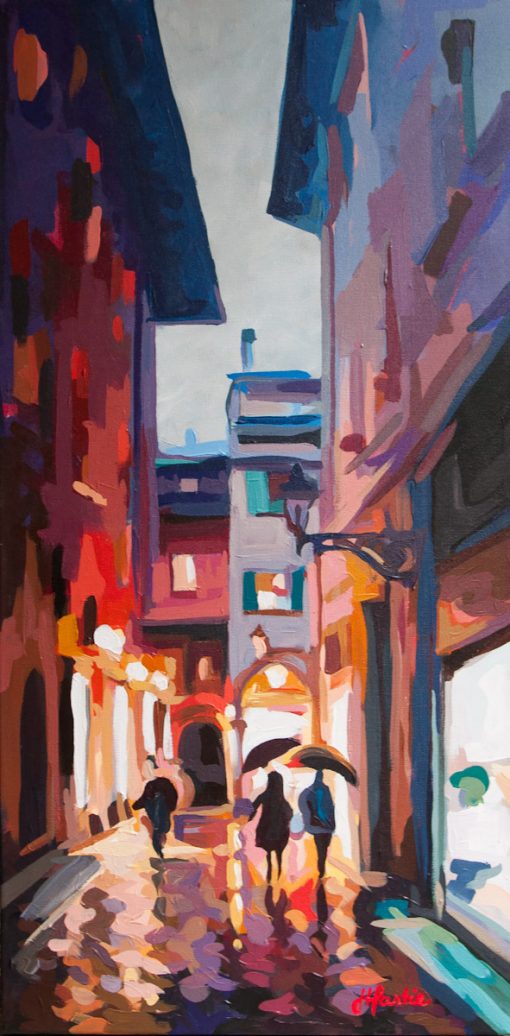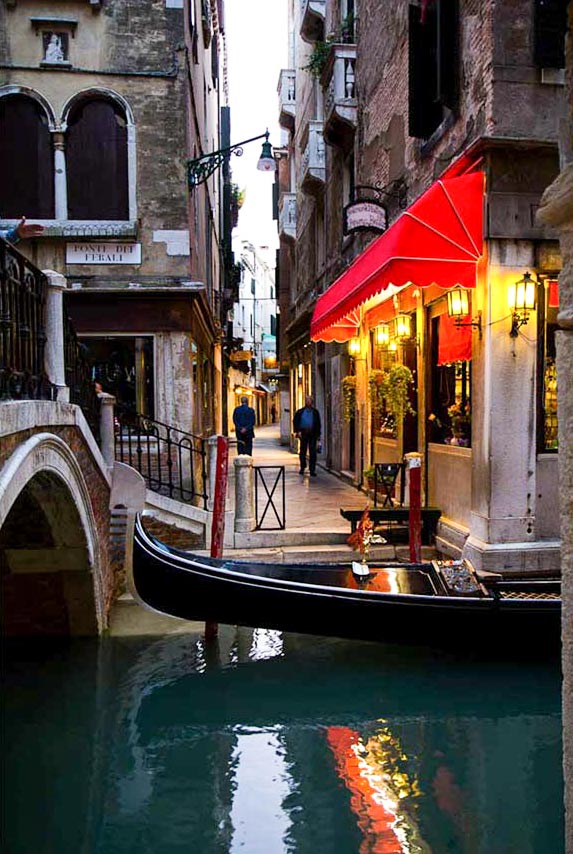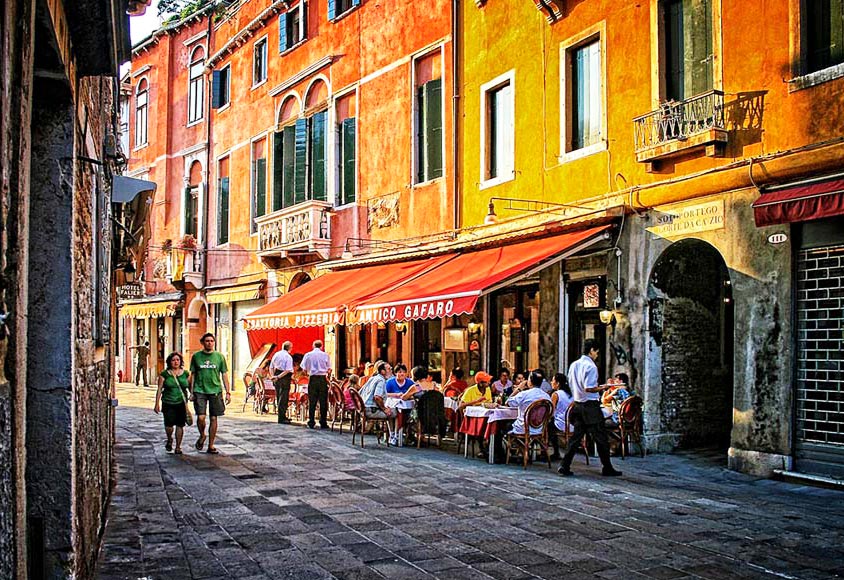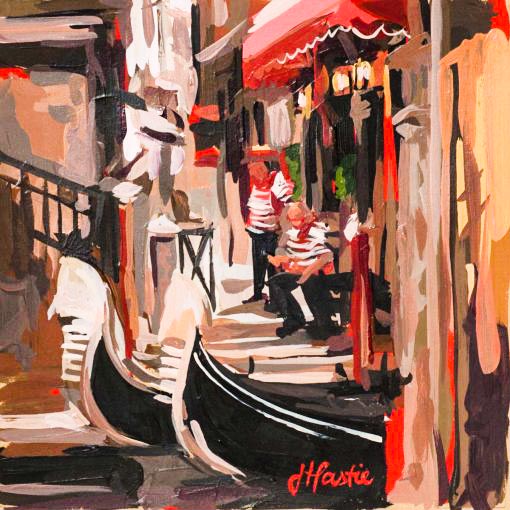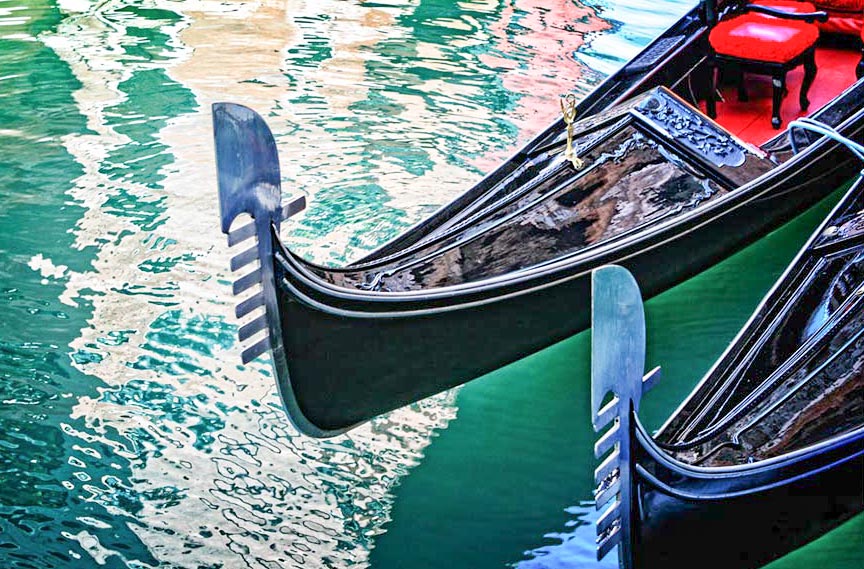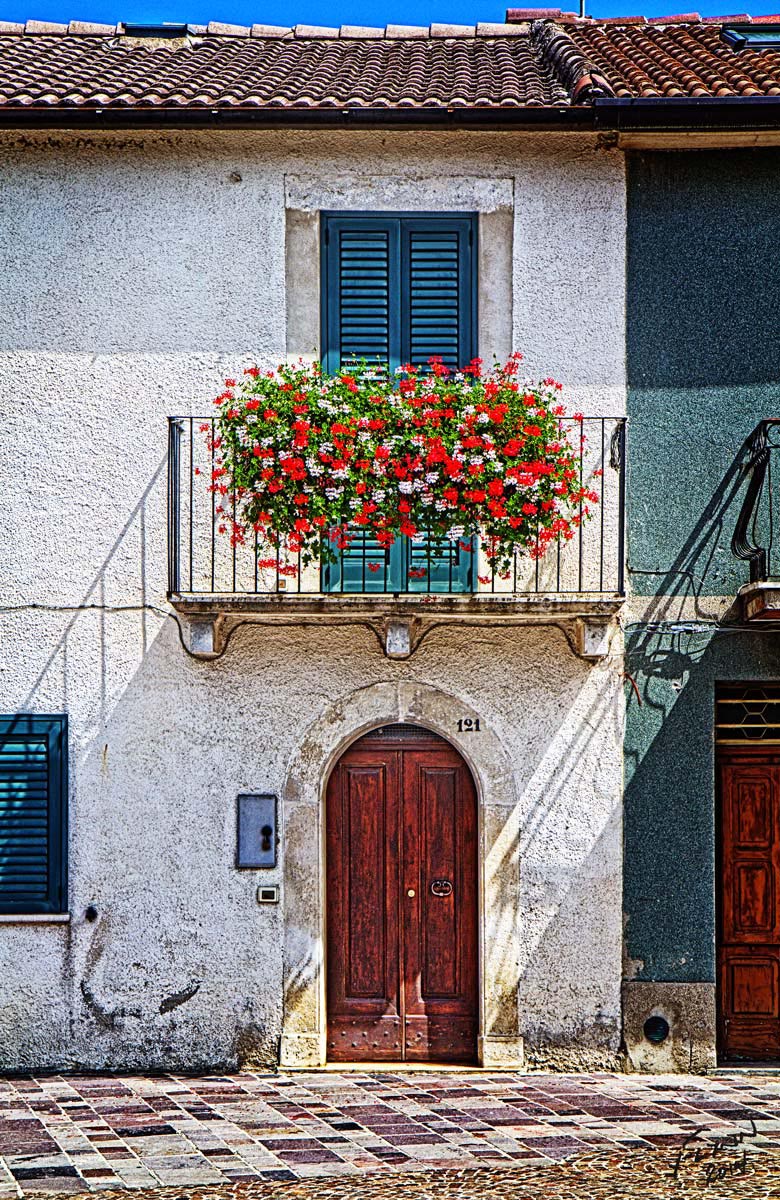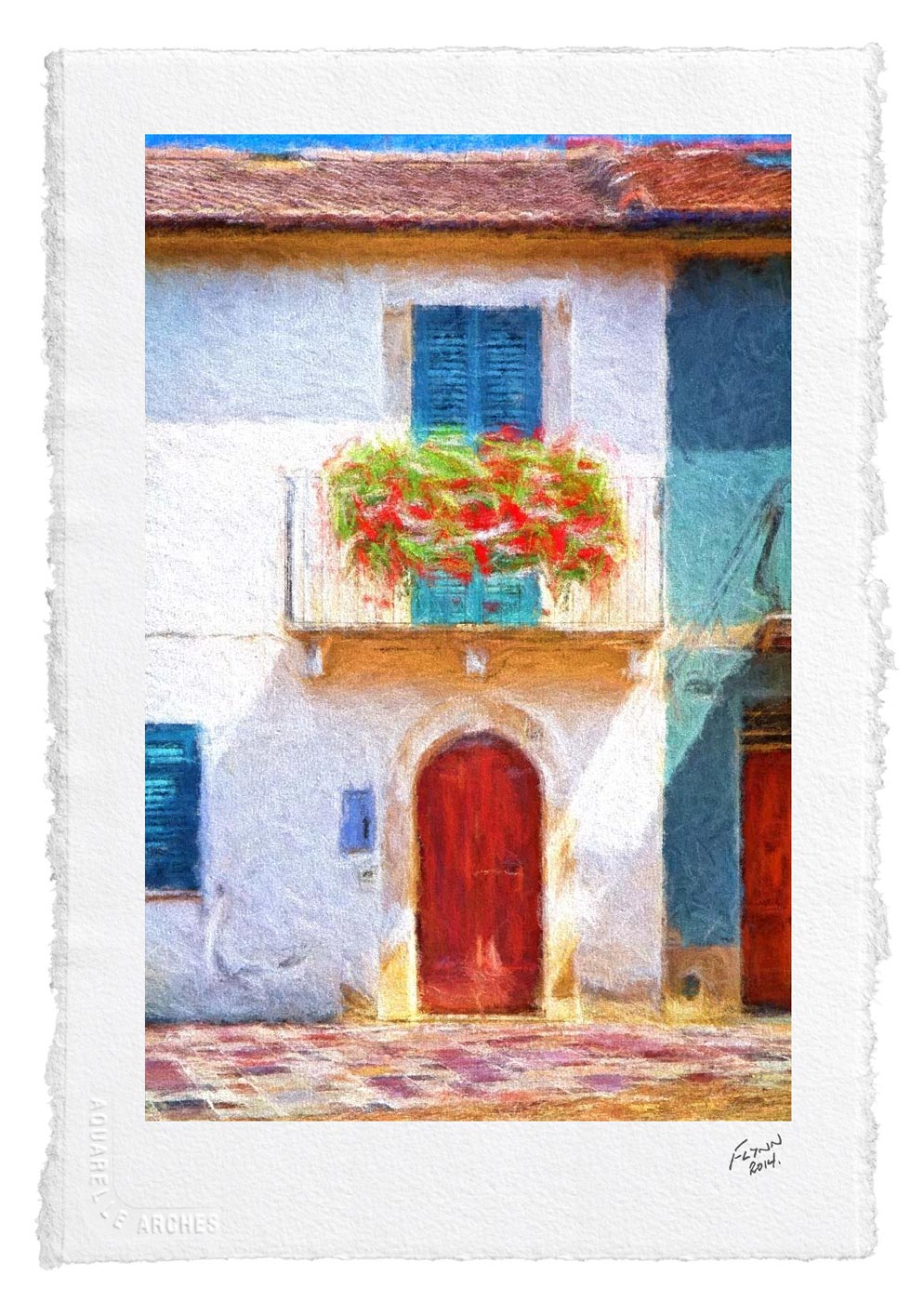Last Friday I was back at the Italian Market in Burnaby. Susan and I were on our way out to a dance and wanted to grab a bite to eat there and have a quick visit with our son-in-law, Joe, who was playing the music for the event.
Of course we took the opportunity to walk around and look at the booths. It is always great fun to see what people are doing and selling, to chat with the vendors and friends we run into, and to sample the products on display. Most of the vendors we had met before as the same people come out evening after evening but there are always new faces.
You will remember that it was here that I met Cristina Pepe and later wrote about her wonderful prints.
Well, she was there and I went over and chatted with her for a few minutes. I love what she does. She has a website and it is worth a visit. Continuing my walk I came upon another artist whom I had not met before. Joanne Hastie is a painter and delightful to talk to. I liked her work and found inspiration in it. Her paintings have a style all their own and they got me to thinking about how similar photography is to painting. That is, of course, when the photographer is trying to think like a painter.
It seems to be a pattern that when I talk to artists in other media I end up learning more about photography. My conversation with Joanne was no exception. Her paintings are not highly detailed. They are composed of colors, shades, shadows and shapes. Her paintings are not unlike the prints created by Cristina. And yet, when you stand back and look at the work from a distance, the jumble of shapes and colors come together in a lovely image.
Let me see if I can explain how I think photography can be like painting. I went to Joanne’s website and borrowed a few images (please forgive me, Joanne) and took a handful of my own to compare. Here is what I found.
I suspect Joanne did not get wet doing this painting. But I like the image better than mine. Much more interesting.
I took this picture in Toricella, a town in Chieti in Abruzzo. That afternoon the rain did not let up and I have several wonderful pictures as a result. My camera stayed dry. I did not!
Let’s start with rain. When the sun goes away and the rain comes down most photographers I know put their cameras away. Mistake! Buy a raincoat for it and get out there. I bought a rain cover called a “Storm Jacket” several years ago and it was one of the best investments, and cheapest, I have made in photo equipment.
Rain creates wonderful moods. The light is soft and dreamy and it reflects off flat surfaces beautifully. Shooting in the rain takes patience but it is very rewarding.
Joanne knows that. She paints scenes of rain and captures the same light that I appreciate so much. It must be tough sitting there in the rain trying to paint on a wet canvas! I mean, surely she paints outside. I would be disillusioned if I found out that she paints rain in a nice warm studio with a glass of brandy in hand – while I am standing with my camera soaked to the skin in the bloody rain!
Joanne captured the Golden Hour perfectly. You can feel yourself wanting to follow these people down the street!
Venice in the evening is a wonderful place to take pictures. But the time when the natural light and the artificial are in balance is short. You only get a few pictures each evening.
Ahhh … the Golden Hour! It is a wonderful time to take a picture …. or to paint one apparently. In the evening as the light fails and darkness approaches there is a short period of time when the camera will still capture the scene but artificial light stands out and you get a warm three dimensional effect.
There are other reasons to shoot in the Golden Hour that have to do with the quality of the light but here we are looking to enhance the sene with artificial light. City street scenes come alive at this time. You see the effect here at the front door of this restaurant in Venice.
It appears that artists use this effect as well. Look at Joanne’s picture. The image would be dull and dark were it not for the artificial illumination visible down the street. The light invites your eye to follow into the picture creating a wonderful 3D effect. The same happens in a photograph.
Another technique I use a great deal is to back light a scene. By that I mean have the sun in front of the camera so that the light is streaming towards the lens. Now to do this successfully you have to block the sun so that it does not flare the image but if you do it right you again get a three dimensional effect that is very pleasing.
And yes, surprise surprise, painters do it too. You can see that Joanne has put her light source in front of her and ended up with the foreground being muted while the distance is bright and inviting!
Here we have both used the prow of the gondola to represent the whole relying on the viewer to supply the rest of the boat.
Often there are details in a scene that are in themselves complete images. I frequently take pictures of door knobs, wrought iron work, carvings, anything that takes my fancy (one day I intend to do a photo show of just pictures of doorways). Both Joanne and I appear to have found the “Fero”, or more properly the “fero da prorà”, to be fascinating. This small detail is representative of the whole gondola and it invites the imagination to complete the image.
Look at these two images. On the left Joanne has painted the front of a building in Italy. She has captured the feeling of the building in a few well chosen brush strokes. For anyone who has spent time in this wonderful country this little painting will evoke memory and emotion.
On the right is a building I photographed in Italy. It is full of detail but I think it lacks impact. This troubled me greatly and I have written about it in these pages: the camera captures too much; the modern lens often stands in the way of creating good art.
I puzzled over this and then I used this image to see if I could overcome the problem of detail. I set about to see what I could do in “post processing”. This is akin to darkroom work: take the image and manipulate it so that it expresses more of the emotion in the scene and less of the detail. I have not done this with any other images yet for lack of time. However, I am encouraged by this outcome.
There is no formula. Each piece is a distinct problem to be solved and each must be developed based on its strengths in the search for its inner art.
Yes, this is the same image without most of its detail. I find it much more satisfying and artistic. As I say, this is the only image I have worked on in this manner but I really have to explore this with other images as well.
So there you are: a short meeting with one artist and my mind spins off into new thoughts about my photography. And this is why I say that all of us photographers who aspire to create art should not be hanging around with other photographers. That leads to thinking in terms of snapshots languishing in a drawer. We should be out looking at art, taking painting or drawing lessons, experimenting with our craft. Nature is our paint, the camera is our pallet and the printer is our brush. Get painting!


